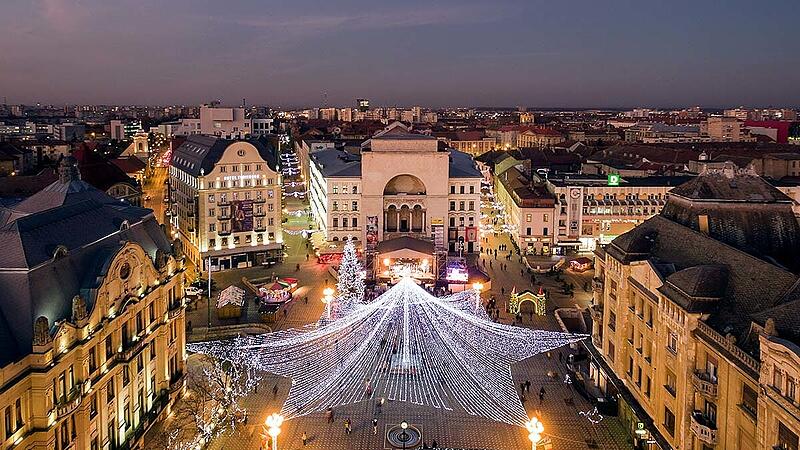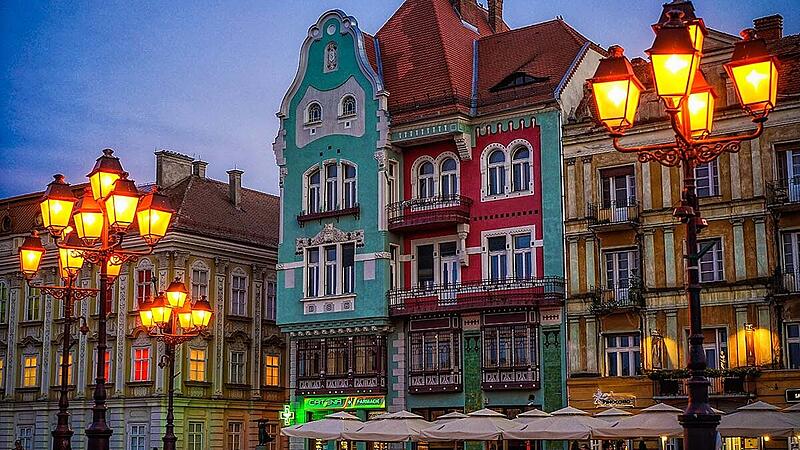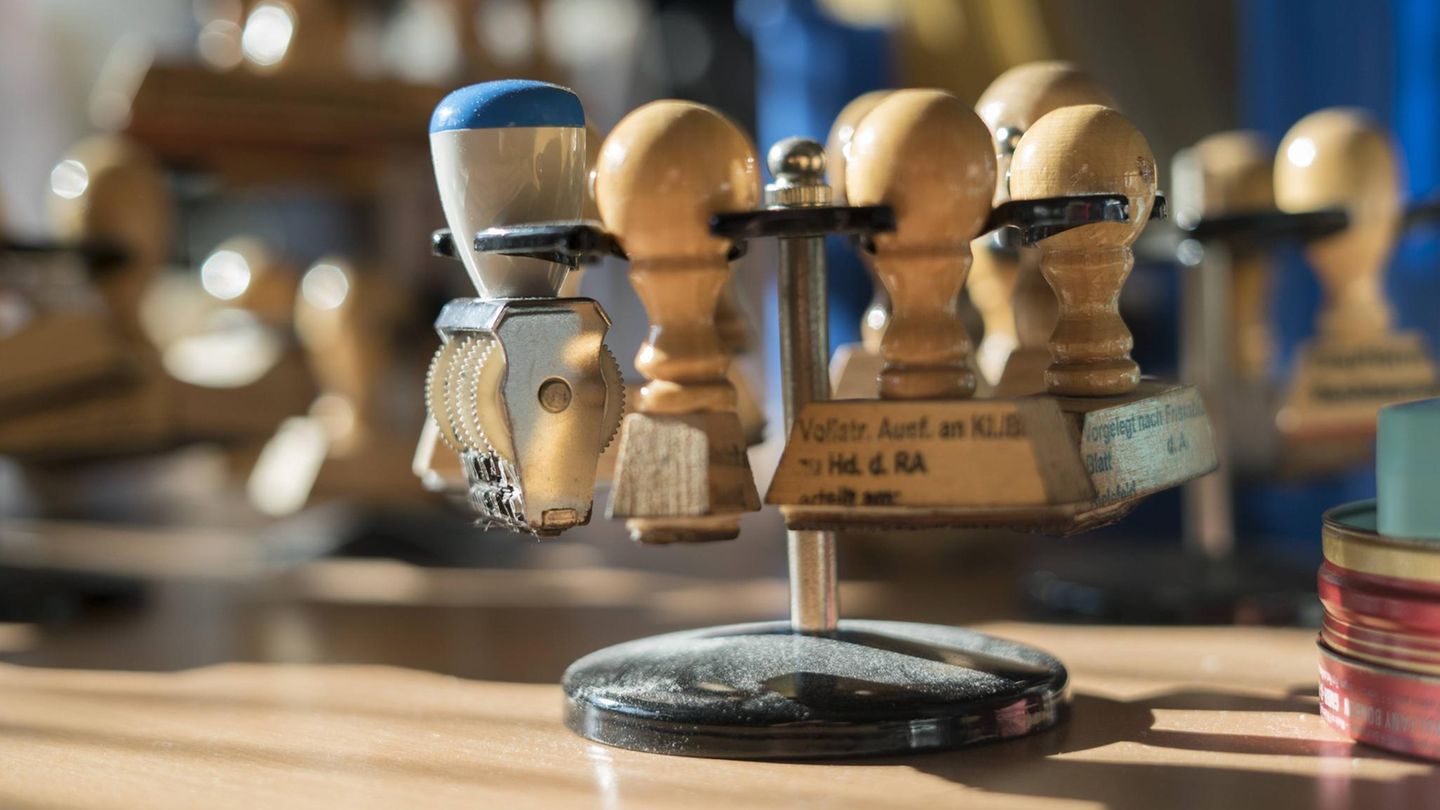To this day we have minorities in the city who speak Serbian, Bulgarian, Hungarian or Slovak, and there is a Czech village nearby,” says Mayor Dominic Fritz where people grow up together,” says the native German from the Black Forest. Fritz was the office manager of the former Federal President Köhler and has felt connected to the city for a social year here. He was involved in the anti-corruption movement and won the local elections in 2020 as the top candidate for his civil rights party 53 percent A moderate political earthquake that shows how open-minded people are here.
Fortress and model city
Timisoara was once a geopolitically hot zone, in the Middle Ages a Hungarian royal castle, developed as a fort and then, from 1552, conquered by the Turks, and for a century and a half a base of the Ottoman Empire. Hunyadi Castle, a brick building designed by an Italian architect and located today on the outskirts of the city centre, also served as the Pasha’s residence until the next turn of the century. “In 1716, modernity began for us,” says tourist guide Ramona Lambing. At that time, Prince Eugene of Savoy conquered the city in the Third Turkish War, and a little later the Banat of Timisoara fell entirely to the Habsburg Empire. Country and city were destroyed, the Banat became an ambitious agricultural project, Temeswar became a fortress city on the military border, built according to the drawing board, the swamps in the surrounding area were drained and drained. The result is the Bega Canal, which runs through the city. Excursion boats, reminiscent of the Italian vaporetti, accompanied by green areas and garden restaurants that spread southern flair in summer.
Only Rochus, Sebastian and Rosalia, the saints of the plague, tell of the pioneering days and their plagues. The cathedral, one of the most important pilgrimage churches in south-eastern Europe, was built according to plans by Fischer von Erlach. The Serbian Orthodox Church is right across the street. Already in the certificate of appointment of the first Catholic bishop of Timisoara it is mentioned that orthodox believers live here and that their customs should be respected. A characteristic that the Banat should retain. German settlers were brought into the country in three “Schwabenzugen”. They have proven themselves in agriculture and industry. The area became a model region, Timişoara a Habsburg administrative center to which Italian or Spanish experts also moved, depending on the need.
Today’s image of the city center is determined by two- or three-storey historic rows of houses – human dimensions -, in between wide squares, free of traffic, lined with street cafes. As in many other cities, the old ring of fortifications was demolished in the 19th century and replaced by parks. Here, too, 550 kilometers away from Vienna, there is a district “Josefstadt” reminiscent of Emperor Franz Joseph and an “Elisabethstadt”, also here, in the border triangle Romania-Serbia-Hungary, the busy architectural office Fellner & Helmer built the opera until 1875 , whose façade was stylized in a Byzantine style in 1920, owing to the newly created national state of Romania after 1918.


Timisoara’s Famous Sons
Bruno Walter began his career as a conductor here, and Timisoara was the setting for Johann Strauss’ operetta “Der Zigeunbaron” (The Gypsy Baron); not only Jonny Weissmüller, the first “Tarzan”, comes from Timisoara, but also Ioan Holender. The opera shares the large building with the German and Hungarian State Theaters, the schedules are subtly coordinated, “we also borrow the artists from each other,” says Artistic Director Lucian Varsandan of the German State Theater and adds self-confidently: “Where is that that you go to the same play in one city and you can watch it in two different productions and in two different languages?” 10,000 visitors use the offer every year. Between the Opera and the Romanian Orthodox Cathedral, the second largest Orthodox church in the world, stretches “Victory Square”, a spacious promenade with palaces built around 1900, historicist-style commercial palaces such as Palais Lloyd, in his “Café Wien”, the authentic is preserved, Egon Erwin Kisch was a guest. Many of the facades of this boulevard are currently being renovated, opera director Cristian Rudik thinks it is “very late”. The Capital of Culture year is to be opened in his house. From here we have a view of the 20th century, symbolized by buildings and monuments. Shortly before it began, Timisoara not only got rid of its fortress character, the city has set a new, upper-class architectural accent here on Victory Square, after all Timisoara experienced the first electric street lighting in Europe in 1884.
Flattered by dictators
The Banat actually wanted to become its own republic after the collapse of the Danube monarchy, but this wish of the Hungarians and German Danube Swabians died out. In the Trianon peace treaty, Transylvania and the Banat were assigned to the newly formed Romania. The Capitoline Wolf, with a statue of Romulus and Remus in the middle of the square, shows how Romania rediscovered itself as the successor to the ancient Roman province in the interwar period and was flattered by Benito Mussolini. From the 1930s, the fate of the German population in the Banat was determined less by the Italian fascist than by the National Socialist partner. Romania’s weak party democracy first slid into a right-wing extremist dictatorship and was soon taken over by Hitler because of the oil wells in the country and as a helper in the march against the Soviet Union.
For the “Volksdeutsche” (a Nazi term) an authority under the supervision of the SS was responsible. In this way, the Banat Swabians became an abused minority and after the war, like all other Romanian-Germans, had no rights for ten years. There was no expulsion here as in Czechoslovakia, but 80,000 Germans from Romania were deported to the Soviet Union for forced labor. In general, they remained accepted as a minority alongside 17 others in the communist state.


A “Germanophile area”
Carmen Lidia Vidu is bringing her documentary “People. For sale” on stage. It revolves around the confidential agreement between the Federal Republic of Germany and the Ceausescu regime, according to which the departure of 220,000 Germans was organized by the Romanian secret service until 1989 for a “bounty”. “The citizen was hostage,” says Vidu, who researched the taboo subject. After the opening of the East, there was a last wave of emigration. And that is publicly regretted.
“You are in a very Germanophile area here,” says Elena Wolf, headmistress of the Lenau School. Today, no more than 36,000 Germans live in Romania, but the country has 60 schools that teach German as their mother tongue. It is Romanian families who send their children to these schools, which also move seamlessly into clubs of the German minority. And the demand is great. The state Lenau-Gymnasium in Timisoara is a prestige model: Two Nobel Prize winners have graduated from here: Herta Müller, the writer, and the chemist Stefan Hell. The director says: “We want students who question what is on offer.” For example, from the 5th grade, “Critical Thinking” is offered as a subject.
After two days and many discussions, one finds confirmation in everyday life of what MP Ovidiu Gant emphasized: “Temesvar means 300 years of tolerance, understanding, coexistence between ethnic groups, cultures and religious communities. We are a cosmopolitan city.” In which, one might add, the security of minorities is guaranteed. How else would spontaneous participation in a large Jewish celebration in the inner-city synagogue be possible without accreditation?


Something that takes a long time …
This climate prompted the city to apply for the title of “Capital of Culture” ten years ago. But the fact that the revolution started here in December 1989 should also be acknowledged with the title. On December 17, 1989, the threatened transfer of the Hungarian evangelical pastor Tökes was the cause of the citizens’ protests, which were initially suppressed bloodily, but then Ceausescu, the “Conducator”, was overthrown. An oppressive documentary film from that winter can be seen at the memorial. The ecumenically designed chapel commemorates those fatalities from the early days, whom the communist regime transported to Bucharest to be cremated and to pretend to relatives that they had fled.
Timisoara as Capital of Culture 2023 has come a long way. First Corona stopped the start, then the team was changed. But the motto has remained: “Shine your light – Light up your city!” The fact that a melting pot of European cultures has developed here over many generations shows that nationalisms can be overcome, without ideological imperatives, but through lived practice.
- Information in German at urlaub-in-rumänien.de, email: info@urlaub-in-rumänien.de
Source: Nachrichten




